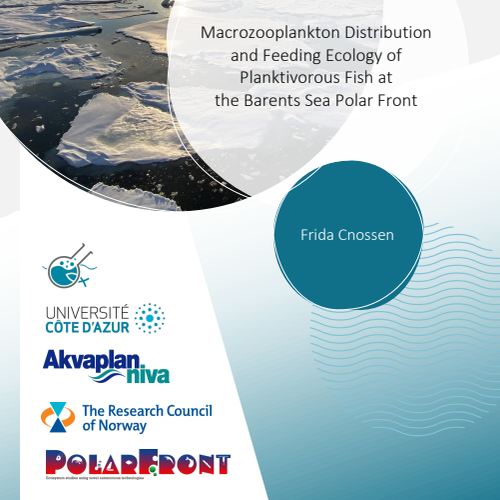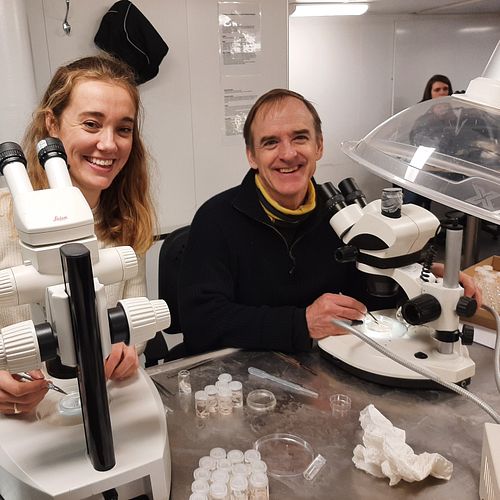14. august 2022 nyhet
MS student Frida Cnossen has been involved in the Polar Front project, led by Akvaplan-niva and funded by the Research Council of Norway. Frida participated in the May cruise of the Polar Front project. Based on cruise data she has now delivered her MS thesis 'Macrozooplankton distribution and pelagic fish feeding at the Barents Sea Polar Front' to the assessment committee at the Université Côte d'Azur in Nice, France. Her thesis includes results on the distribution and biomass of macrozooplankton (krill, amphipods, arrow worms, etc.) and the diets of capelin and polar cod along a transect from the warmer open Barents Sea across the Polar Front to ice-covered Arctic waters.
Frida found strong evidence for the Polar Front in Spring acting as a barrier, clearly separating Arctic and Atlantic plankton communities. Smaller size classes of capelin were not feeding, whereas polar cod and larger capelin fed predominantly on krill and copepods. Supervisor and leader of the Polar Front project, Paul Renaud: "Frida's work covers a key element of the project goal, to track the role of the Polar Front in determining the structure and function of the pelagic ecosystem through multiple seasons."


